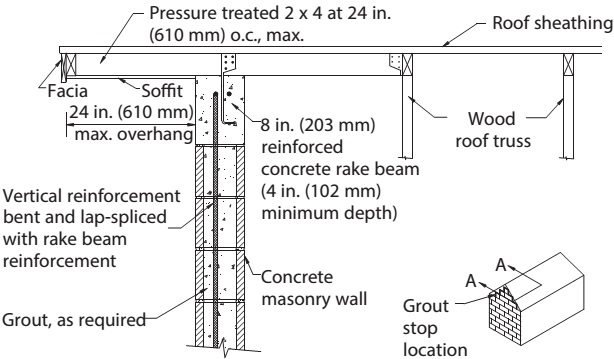In the realm of architectural and structural design, the rake beam holds a significant role. This vital component not only ensures the stability of a structure but also contributes to its aesthetic appeal. In this comprehensive guide, we will explore the ins and outs of rake beams, their importance, the installation process, and the benefits they bring to construction projects.
What is a Rake Beam?
A rake beam, also known as an inclined beam, is a structural element that connects the tops of inclined columns or walls to provide lateral support and resist the forces acting on the structure. It is typically angled and installed diagonally to distribute the load efficiently. By utilizing rake beams, architects and engineers can achieve enhanced structural stability, especially in buildings with sloping roofs or inclined walls.
Why are Rake Beams Important?
Rake beams play a crucial role in maintaining the structural integrity of a building. They resist horizontal forces such as wind loads and seismic activities, preventing excessive movement or deformation. Furthermore, rake beams help distribute the load evenly, reducing stress concentrations on the columns or walls. By incorporating rake beams into the design, architects can ensure a durable and robust structure capable of withstanding various environmental conditions.
Installation Process:
The installation of rake beams requires careful planning and execution. Here are the general steps involved:
Structural Analysis: Before beginning the installation, a detailed structural analysis of the building must be conducted. This analysis determines the optimal positioning, dimensions, and load-bearing capacity of the rake beams.
Design and Engineering: Based on the structural analysis, engineers develop precise designs for the rake beams, considering factors such as material strength, load distribution, and compatibility with the overall architectural design.
Fabrication: Rake beams are usually fabricated off-site to ensure accurate construction and minimize on-site assembly time. The choice of materials, such as steel or reinforced concrete, depends on the specific project requirements and load calculations.
Site Preparation: The installation site needs to be prepared accordingly, including clearing any obstructions and ensuring a level foundation for the rake beam.
Assembly and Fixing: Once the rake beam is fabricated, they are transported to the construction site and carefully lifted into place using cranes or other lifting equipment. They are then fixed securely to the inclined columns or walls, ensuring proper alignment and connection.
Benefits of Rake Beam:
Structural Stability: Rake beam provide essential lateral support, improving the overall stability of the building and reducing the risk of structural failure during external forces like earthquakes or strong winds.
Aesthetic Appeal: Apart from their functional significance, rake beam can enhance the visual appeal of a structure. They add architectural interest, especially in buildings with sloping roofs or inclined walls, creating a unique and captivating design.
Load Distribution: Rake beams effectively distribute the weight of the structure, minimizing stress concentrations and preventing excessive load on individual columns or walls. This contributes to prolonging the building’s lifespan and minimizing the frequency of maintenance or repair requirements.
Flexibility in Design: Rake beam offer architects greater flexibility in designing structures with unconventional shapes or inclined elements. They allow for more creativity without compromising structural integrity.
Conclusion:
Rake beams are an integral part of modern construction, ensuring both stability and aesthetic appeal. By incorporating rake beam into building designs. Architects and engineers can create robust structures capable of withstanding environmental forces while offering visually captivating aesthetics. The installation process involves careful planning, engineering, and precise execution. As the demand for innovative and sustainable architectural solutions continues to grow. Rake beams will undoubtedly remain a vital component in the construction industry.

